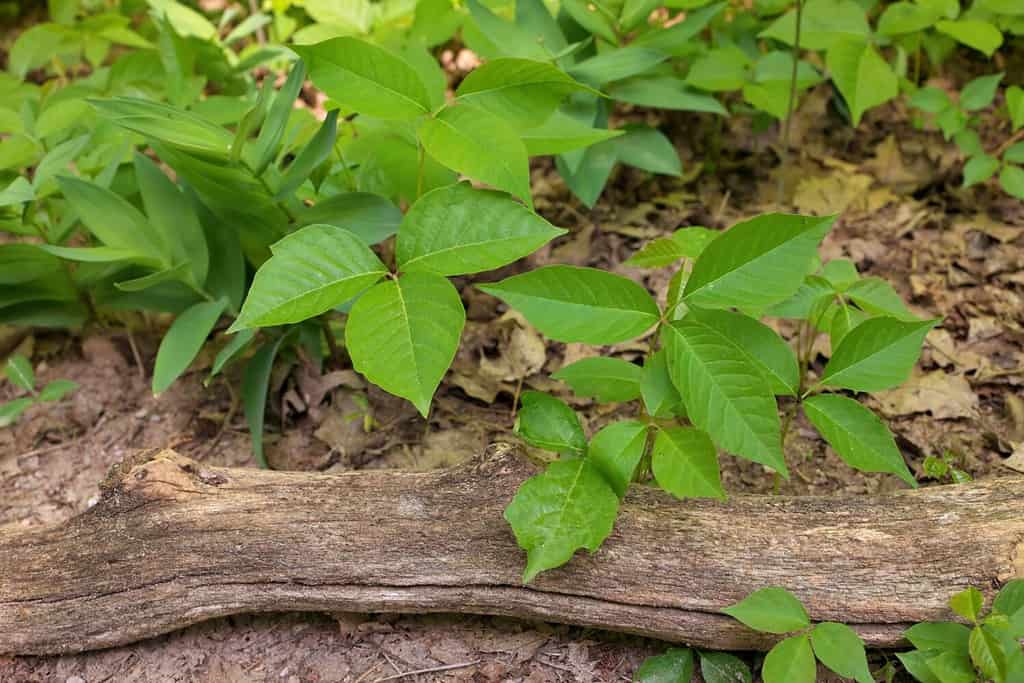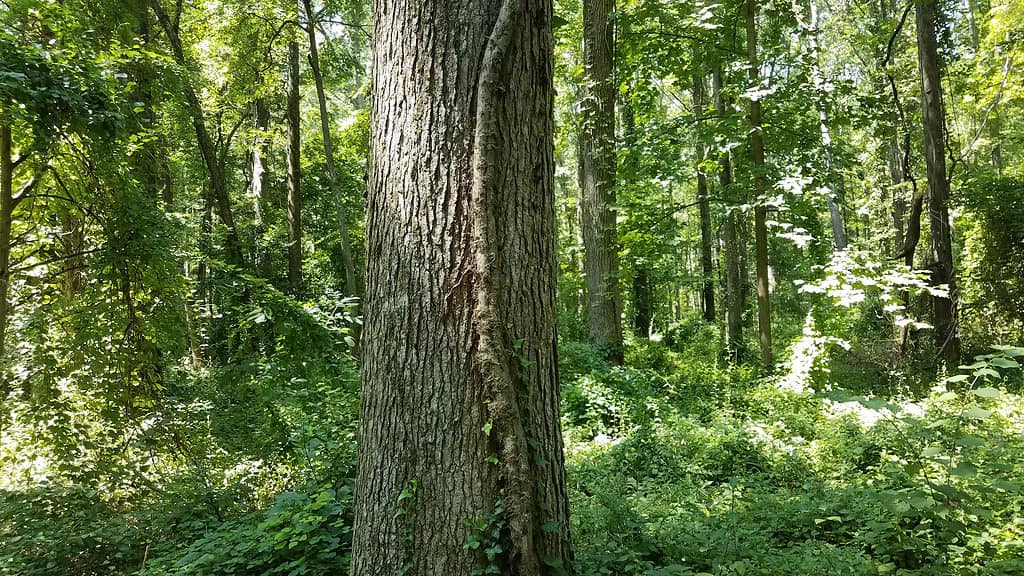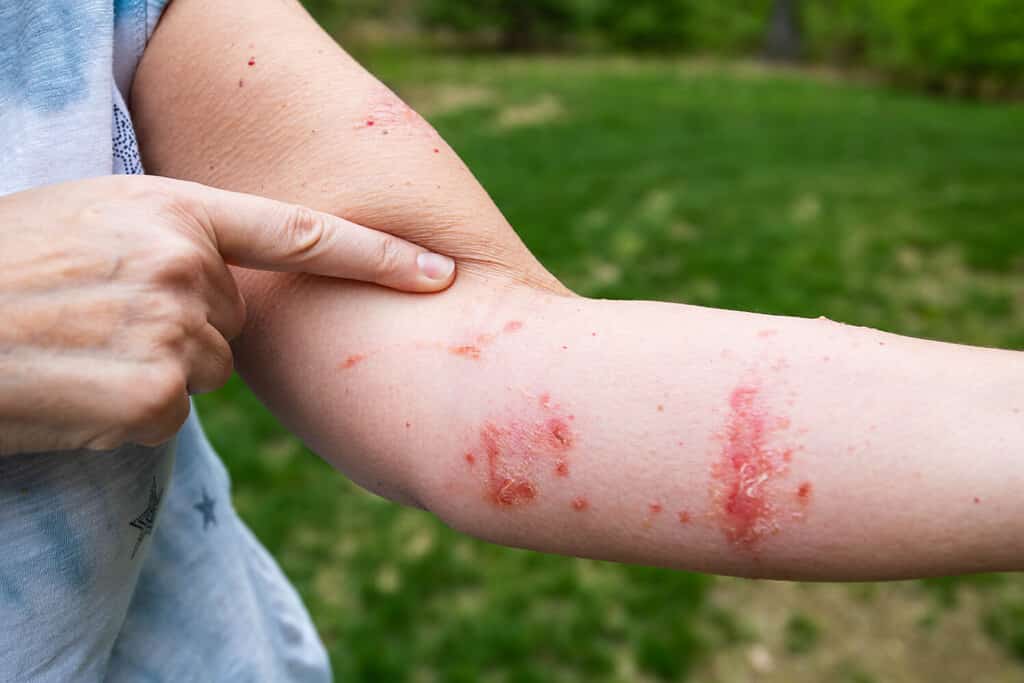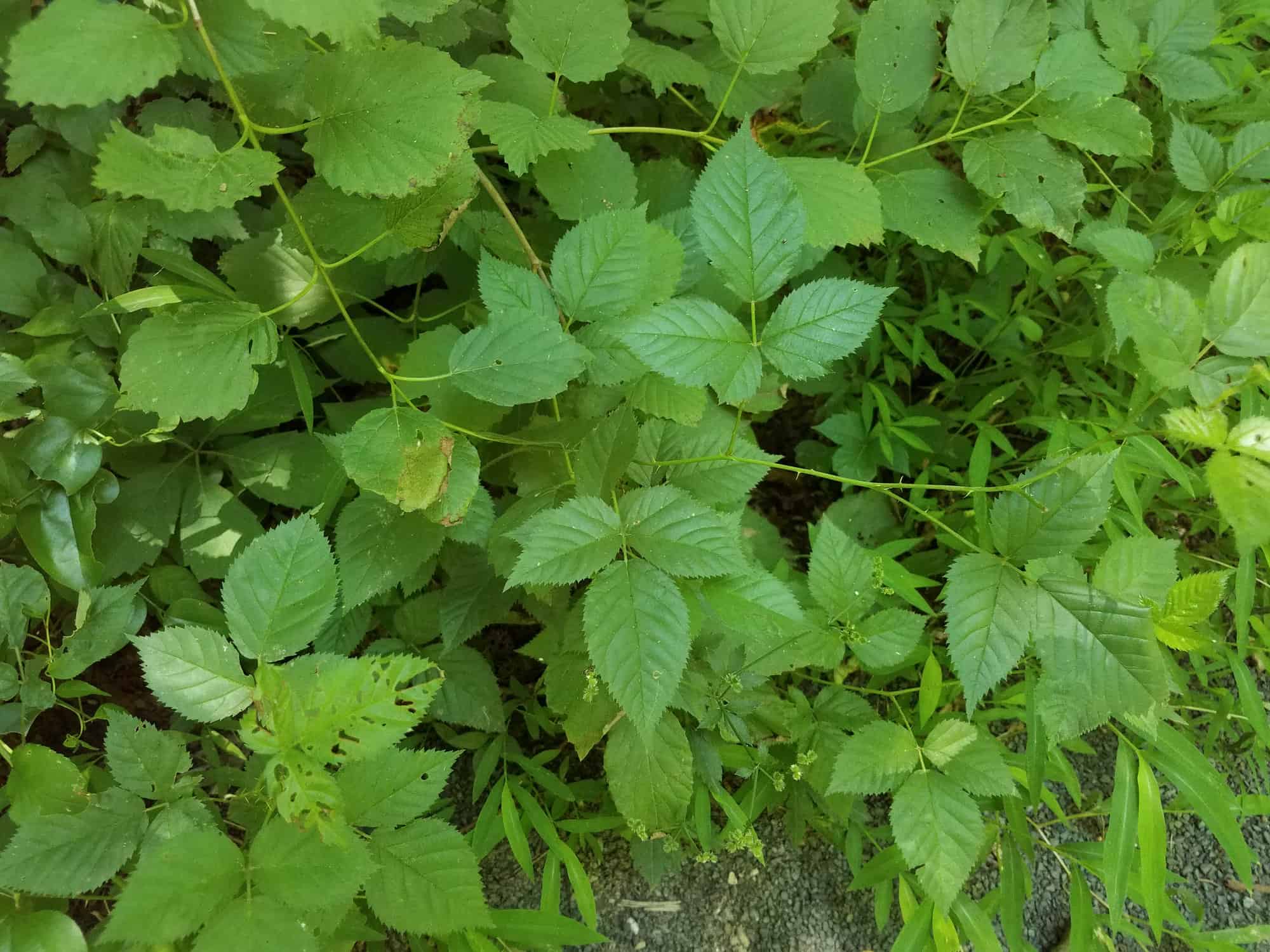Plants change when the weather shifts for the season, and they may not always look like you expect. Poison ivy, one of the plants responsible for blistery rashes, is one example. In the winter, poison ivy plants change and go dormant, but the roots remain active.
Active roots indicate you’ll want to remain vigilant when doing yard work, hiking, hunting, or enjoying nature another way. You’ll want to identify it quickly and know what happens if you’re exposed; these details can help.
How It Looks

Poison ivy leaves turn from green to red before falling off when the weather gets cold.
©Mark van Dam/Shutterstock.com
Poison ivy leaves become deep red before shriveling up and falling off. Sometimes the roots are still exposed and can be bare or hairy.
Poison ivy also has white berries on its branches, and you can easily spot them early in winter. Birds eat the berries during the winter, so by the end, there may not be any left on the plant.
Poison Ivy Is Still Unsafe to Touch in the Winter
You might think poison ivy plants are safe to touch in winter, but it’s an inaccurate myth. The roots are still active and can continue growing and attaching to things. Exposure to the roots can still leave you with an unsightly and uncomfortable poison ivy rash, even when everything around you is cold and frozen.
Urushiol is an oily substance in poison ivy that can cause a reaction, and you can get it on you by touching any part of the plant. You also may react if you touch anything that has urushiol on it, like clothing, surfaces, or a pet. It takes only a tiny amount of urushiol to trigger an intense reaction, although some people are more sensitive than others.
It Often Wraps Around Firewood

A poison ivy vine can be hard to see, especially when it has no leaves.
©iStock.com/Justin Smith
Your firewood pile is susceptible to hidden poison ivy, so wear gloves when handling it. If it wraps around a log and the leaves fall off, you might not see it until it’s too late. Don’t use firewood in a fire if it had a vine with hairy roots wrapped around it.
Poison Ivy Can Sneakily Grow in a Christmas Tree
If cutting down a Christmas tree is a yearly tradition for you and your family, you’ll want to be mindful of what’s growing around the trunk and branches. Poison Ivy can grow up in the middle of the tree undetected, winding around in hard-to-see places. Then, once you get it home, you wind up with a winter case of poison ivy rash.
Check the tree for hairy roots to avoid bringing poison ivy into your home. Remember that it can be hard to see and check the entire tree thoroughly. It’s also important to note that you should wear gloves while cutting the tree down and inspecting it to avoid accidental contact.
Dead Plants Are Still Unsafe
It’s hard to tell if a plant is dead or dormant, but either way, you’ll want to avoid poison ivy. Urushiol doesn’t disappear when the plant dies, so you can still react if you encounter it. Handle it with gloves and be as careful as you would if it were alive and had leaves.
How to Get Rid of Poison Ivy

Be careful when removing poison ivy so you don’t react and develop a rash.
©Michael Moloney/Shutterstock.com
Poison ivy in the winter is still a problem you’ll want to handle. Even if you don’t use that space in your yard during this time of year, you’ll want to remove it before warm weather returns. There are some specific things you should and shouldn’t do when dealing with the situation.
You shouldn’t remove poison ivy branches, roots, stems, or leaves with exposed skin. Repeated exposure can lead to an allergic reaction, even if you’ve never reacted before.
Another thing to avoid is burning poison ivy because it can be incredibly toxic when inhaled. It can cause a systemic reaction that affects many parts of your body.
Once you remove the plant from the ground, put it in sealed plastic bags so no one is accidentally exposed. Throw it out, and then immediately wash everything you used and were wearing. Take a shower right away, too, just in case your bare skin touched anything that was exposed.
Remove the entire root because even a small portion can quickly grow back. It’s also a good idea to kill poison ivy plants with a homemade spray. These sprays will kill most plants, so be careful where you spray.
Thank you for reading! Have some feedback for us? Contact the AZ Animals editorial team.








